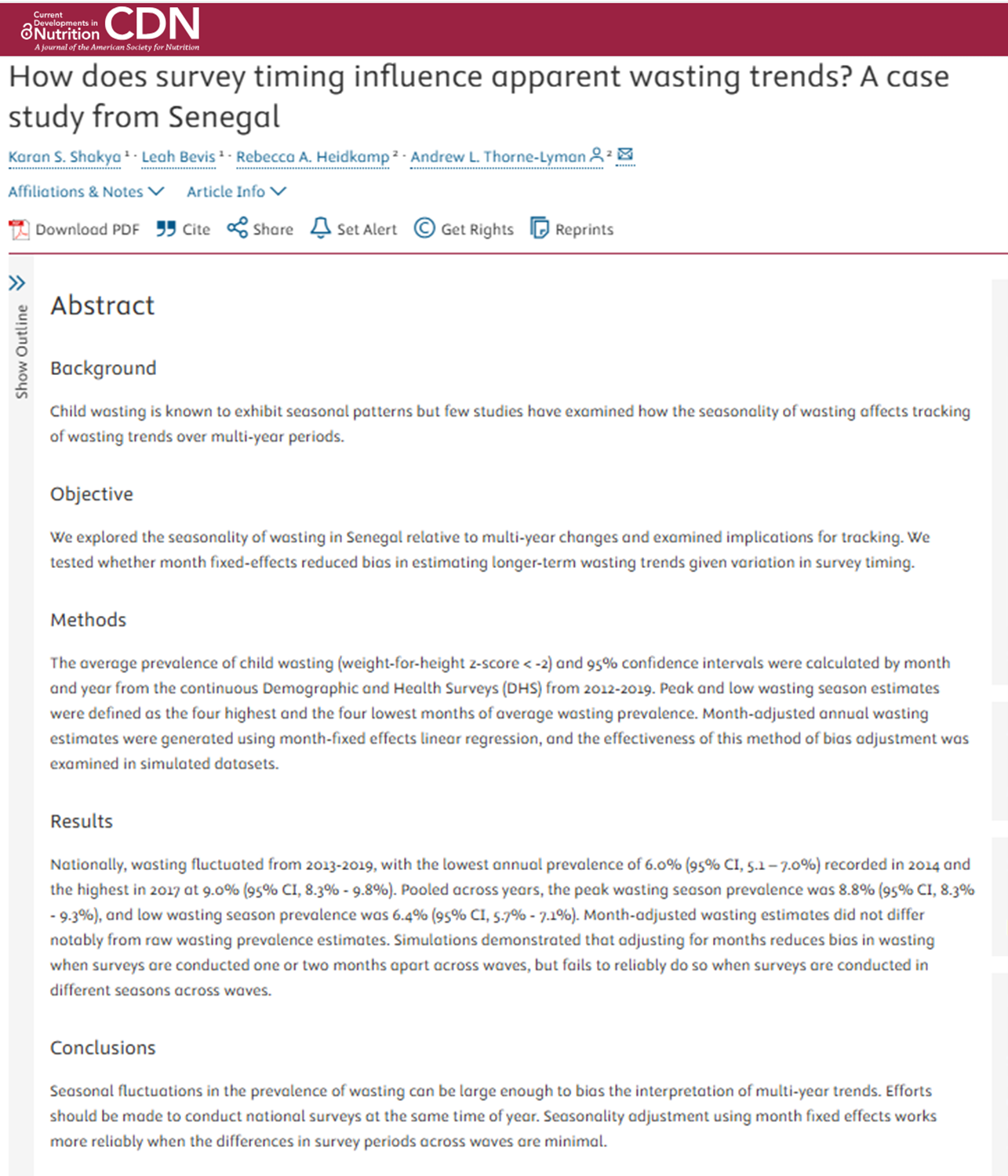Journal Article | 10.1016/j.cdnut.2024.104480
Date of Publication | October 2024
Abstract
Background
Child wasting is known to exhibit seasonal patterns but few studies have examined how the seasonality of wasting affects tracking of wasting trends over multi-year periods.
Objective
We explored the seasonality of wasting in Senegal relative to multi-year changes and examined implications for tracking. We tested whether month fixed-effects reduced bias in estimating longer-term wasting trends given variation in survey timing.
Methods
The average prevalence of child wasting (weight-for-height z-score < -2) and 95% confidence intervals were calculated by month and year from the continuous Demographic and Health Surveys (DHS) from 2012-2019. Peak and low wasting season estimates were defined as the four highest and the four lowest months of average wasting prevalence. Month-adjusted annual wasting estimates were generated using month-fixed effects linear regression, and the effectiveness of this method of bias adjustment was examined in simulated datasets.
Results
Nationally, wasting fluctuated from 2013-2019, with the lowest annual prevalence of 6.0% (95% CI, 5.1 – 7.0%) recorded in 2014 and the highest in 2017 at 9.0% (95% CI, 8.3% – 9.8%). Pooled across years, the peak wasting season prevalence was 8.8% (95% CI, 8.3% – 9.3%), and low wasting season prevalence was 6.4% (95% CI, 5.7% – 7.1%). Month-adjusted wasting estimates did not differ notably from raw wasting prevalence estimates. Simulations demonstrated that adjusting for months reduces bias in wasting when surveys are conducted one or two months apart across waves, but fails to reliably do so when surveys are conducted in different seasons across waves.
Conclusions
Seasonal fluctuations in the prevalence of wasting can be large enough to bias the interpretation of multi-year trends. Efforts should be made to conduct national surveys at the same time of year. Seasonality adjustment using month fixed effects works more reliably when the differences in survey periods across waves are minimal.

